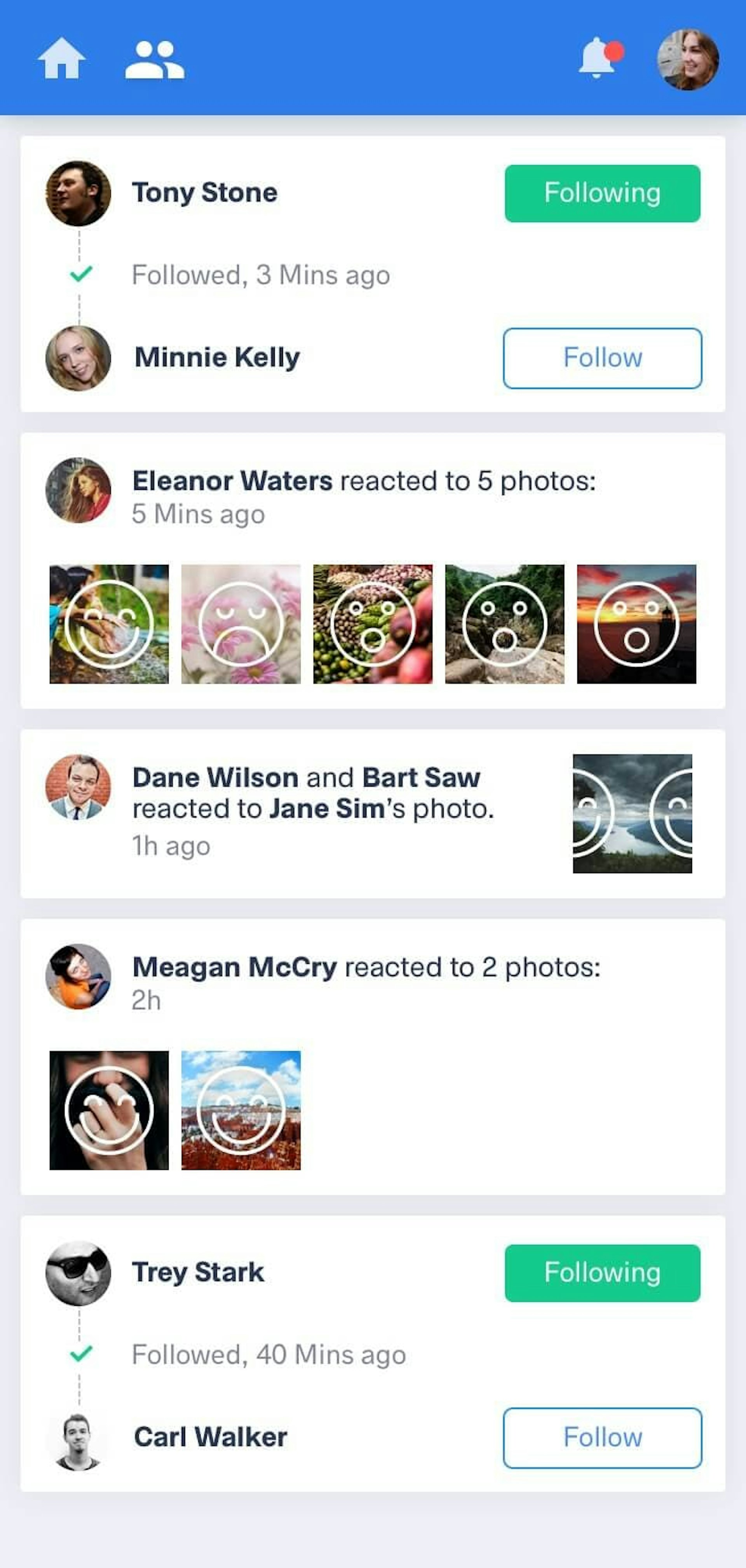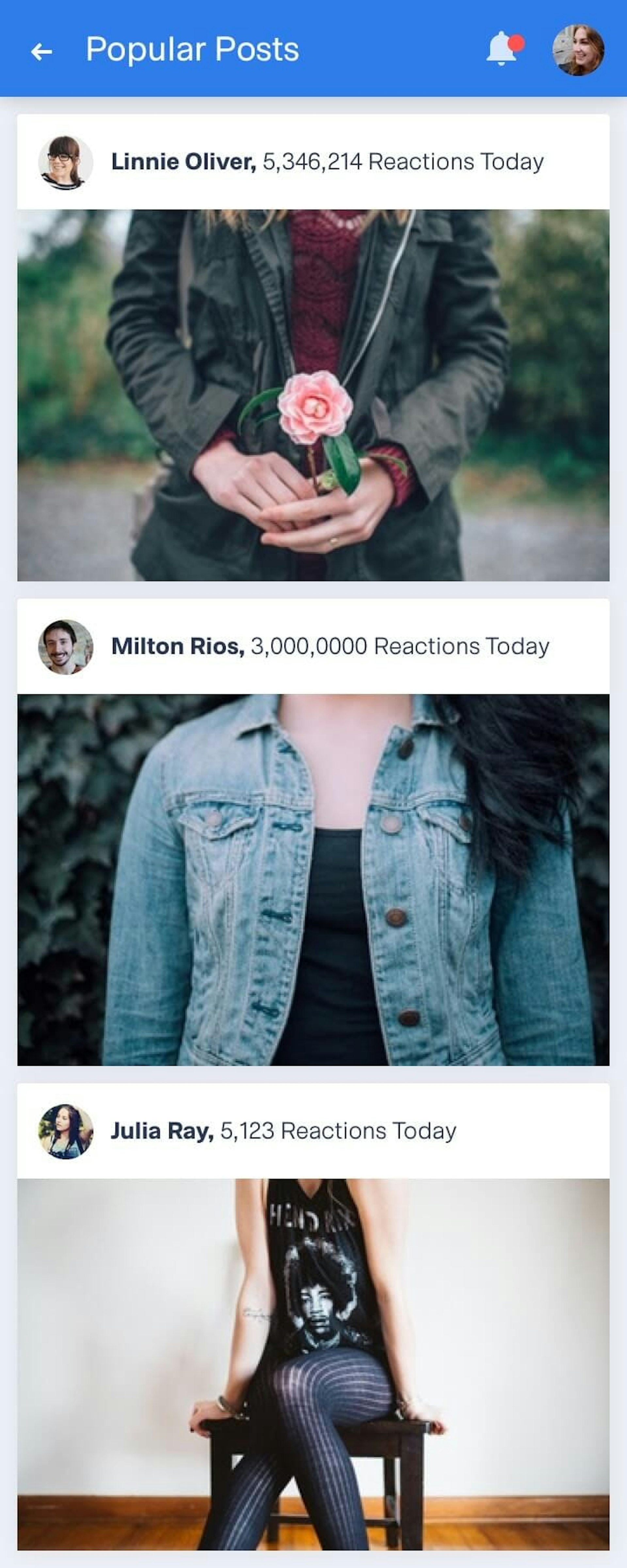These days, activity stream and feeds (ex. newsfeeds) are ubiquitous. The most obvious examples are the Twitters and Facebooks of the world, but feeds are also being adopted by companies such as Google and Amazon. We’ve even noticed that many companies are basing their entire application off of a dynamic feed structure, but don’t even know they’re using feed technology! Or at least they didn't know there's a name for it. Now, isn’t that ironic?
The reason so many applications use feeds is because they are a great way to connect people to information, drive app engagement and retention, and can even uncover new revenue sources (ex. paid advertisements). The everyday digital consumer understands how to navigate feeds and have come to expect certain feed features that keep them coming back for more. Let’s take a step back and define what a feed or activity stream is:
FEED: A list of activities from the topics you follow. You can use a feed to follow any type of topic. Common topics include users or friends, stocks, playlists and artists.
Now that that’s out of the way, let’s take a closer look at the 3 crucial features to take into account when thinking about building a feed into your product.
-
Aggregation
Display content from everything (people, interests, places, etc.) you follow and group
activities accordingly. Example: You follow your Dad who goes on a liking spree of 15 photos. Without aggregation, your feed would show 15 different activities of your Dad liking various photo (“Dad liked Photo A”, “Dad liked Photo B”, “Dad liked Photo C”, etc.). I don’t know about you, but I would find that extremely annoying (sorry Dad) and would quickly get bored (double sorry Dad). With aggregation, users only get one activity notification - “Dad liked 15 photos”. So what? Providing users with the option of either learning more about the photos your Dad liked or moving on to other stories within your feed, keeps them entertained and engaged. #nailedit****
Example: You follow your Dad who goes on a liking spree of 15 photos. Without aggregation, your feed would show 15 different activities of your Dad liking various photo (“Dad liked Photo A”, “Dad liked Photo B”, “Dad liked Photo C”, etc.). I don’t know about you, but I would find that extremely annoying (sorry Dad) and would quickly get bored (double sorry Dad). With aggregation, users only get one activity notification - “Dad liked 15 photos”. So what? Providing users with the option of either learning more about the photos your Dad liked or moving on to other stories within your feed, keeps them entertained and engaged. #nailedit**** -
Ranking
Take control of where certain activities show up in your feed, rather than having
activities sorted chronologically. Example 1: Advertiser content needs to show up at the top of users feeds for a week. Without ranking, as new activities come in, that advertiser content is pushed to the bottom of the feed, and is seen less and less as time goes on (sad). With ranking, you can give specific content a higher score in order to show up at the top of feeds. Example 2: You want popular posts to show up higher in users feeds. To do this, apply a point system to each “Reaction” a post received. Then, rank the post within the feed by the score – the higher the score (or # of reactions), the higher the post appears in the feed. So what? Making popular content easily available raises user engagement and retention. #boom****
Example 1: Advertiser content needs to show up at the top of users feeds for a week. Without ranking, as new activities come in, that advertiser content is pushed to the bottom of the feed, and is seen less and less as time goes on (sad). With ranking, you can give specific content a higher score in order to show up at the top of feeds. Example 2: You want popular posts to show up higher in users feeds. To do this, apply a point system to each “Reaction” a post received. Then, rank the post within the feed by the score – the higher the score (or # of reactions), the higher the post appears in the feed. So what? Making popular content easily available raises user engagement and retention. #boom**** -
Personalization
Learn about a user’s interests and personalize their experience using machine learning.
The five use cases for personalization are: discovery feeds, email digests, product
recommendations, edgerank and follow suggestions. Example 1: Follow suggestions. Amber likes San Francisco/Bay Area sports teams. You know this because she engages with The Warriors, 49er’s and the San Jose Sharks. Thanks to machine learning, Amber’s follow recommendations include Steph Curry and the Giants (baseball) – both of whom she is likely to want to follow based on her other interests.** Example 2: Instagram’s discovery feed. If you engage with snowboarding pictures, Instagram will eventually learn that you’re interested in snowboarding and/or snow activities and show more of that content on your discovery feed. Quora does something similar with their Q&A platform and Etsy uses the same techniques for ecommerce conversion optimization. So What? Personalization it the ultimate way to keep your users engaged with the application. Who hasn’t clicked on the next YouTube video 5 times since each one is something you simply can’t miss out on?**
Example 1: Follow suggestions. Amber likes San Francisco/Bay Area sports teams. You know this because she engages with The Warriors, 49er’s and the San Jose Sharks. Thanks to machine learning, Amber’s follow recommendations include Steph Curry and the Giants (baseball) – both of whom she is likely to want to follow based on her other interests.** Example 2: Instagram’s discovery feed. If you engage with snowboarding pictures, Instagram will eventually learn that you’re interested in snowboarding and/or snow activities and show more of that content on your discovery feed. Quora does something similar with their Q&A platform and Etsy uses the same techniques for ecommerce conversion optimization. So What? Personalization it the ultimate way to keep your users engaged with the application. Who hasn’t clicked on the next YouTube video 5 times since each one is something you simply can’t miss out on?**
These 3 features are great to keep in mind while building your app. Each app or community will have unique features that are crucial to their success. We’re here to help provide inspiration and ideas on what to try out! For more information on and help with building your feed, check out Stream's API!
